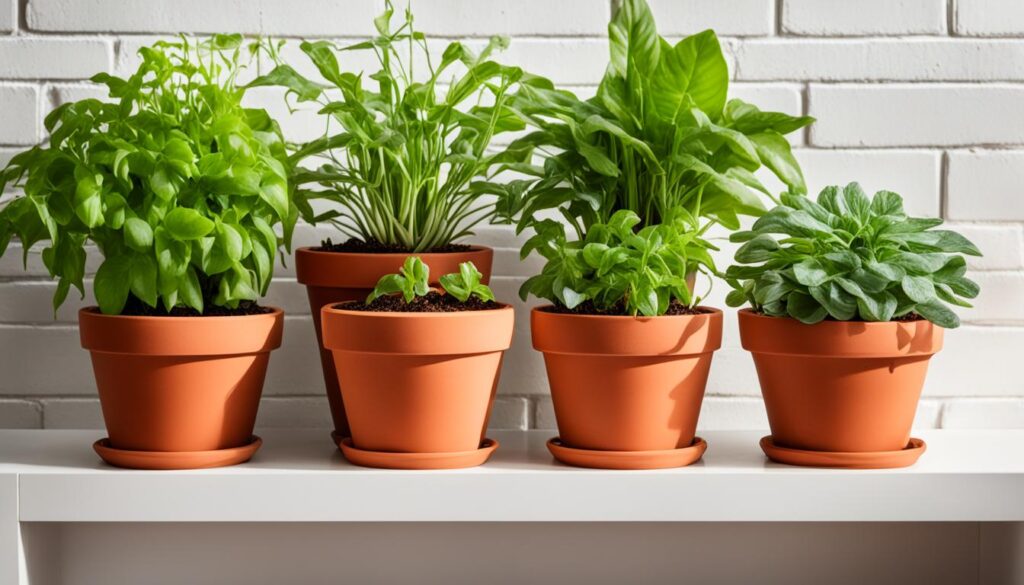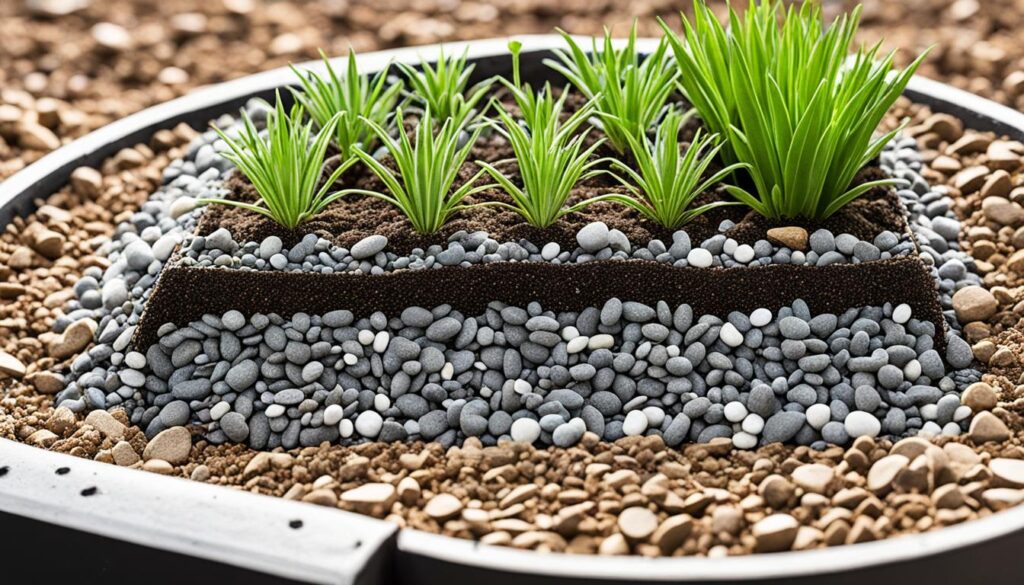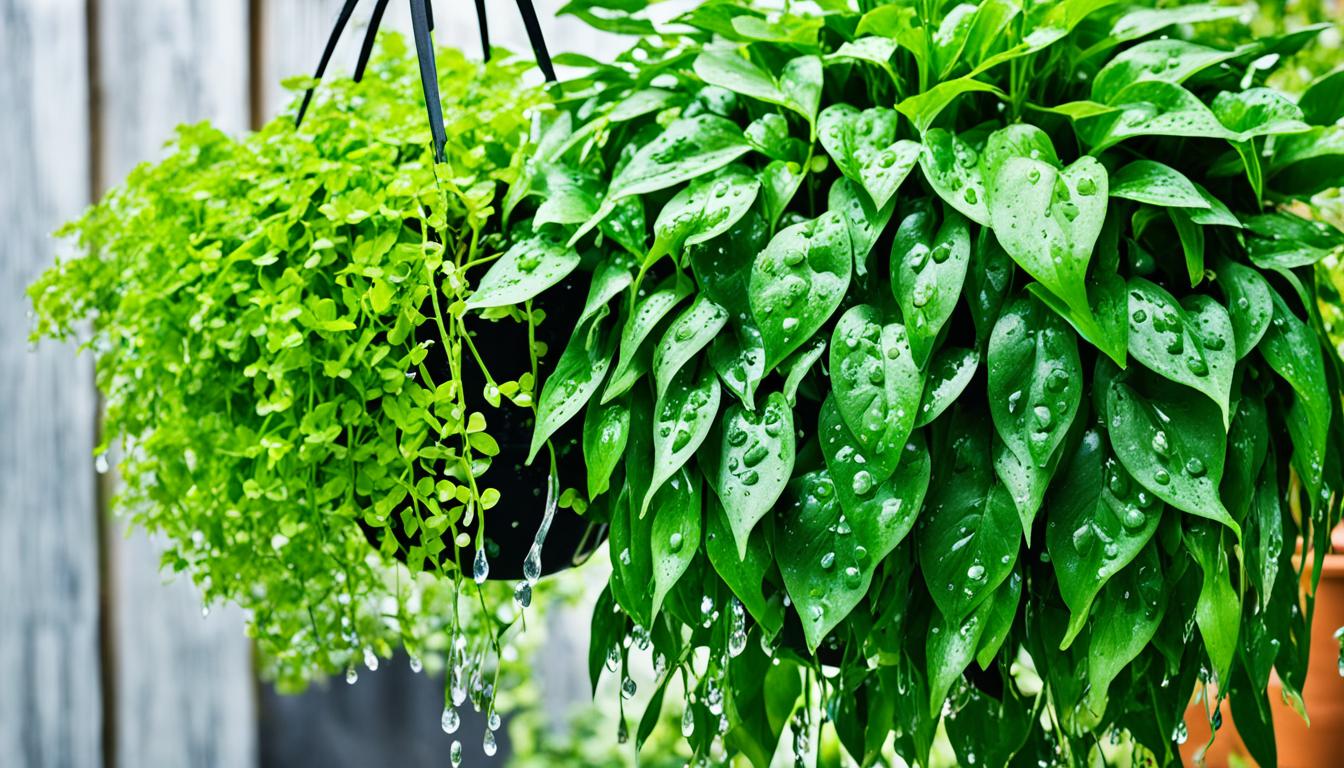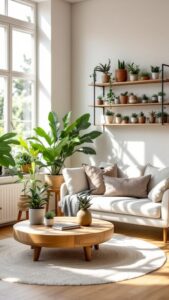Are your houseplants struggling with waterlogged soil and poor drainage? The secret to thriving, vibrant plants may lie in your potting mix and container selection. But have you ever wondered, what’s the true impact of proper drainage on your plant’s health and longevity? Discover the answers in this comprehensive guide to improving drainage for your beloved indoor greenery.
Proper drainage is crucial for happy and healthy houseplants. Without it, your plants may get root rot or suffer from waterlogged soil. By understanding drainage’s importance and using simple strategies, you can help your indoor plants flourish.
The Importance of Proper Drainage for Potted Plants
Having good drainage is key for keeping potted plants healthy. If the soil stays too wet, it can block the roots from getting oxygen. This can cause root rot, a big problem for plants.
Root Rot and Its Consequences
Root rot happens when roots don’t get enough oxygen because of too much moisture. This leads to fungi growth, causing leaves to turn yellow or brown, and the plant may die. It’s important to fix root rot fast to stop it from spreading.
Waterlogged Soil and Its Impact on Plant Health
Waterlogged soil can hurt plants in many ways. It can lead to salt and mineral buildup, making it hard for plants to get the nutrients and water they need. This can cause plants to grow slowly, turn color wrong, and lose their strength.
To keep potted plants healthy, make sure they have good drainage. This stops the soil from getting too wet. By knowing how poor drainage can hurt plants, you can make a better home for your plants to grow well.
Choosing the Right Containers for Optimal Drainage
Choosing the right container is key for healthy houseplants. It’s important to prevent waterlogged soil to keep your plants’ roots healthy. Let’s look at two popular options for better drainage.
Containers with Drainage Holes
Many clay, terracotta, or stone containers come with drainage holes. These holes let excess water out, stopping soil from getting too wet. But, some plastic pots might need a hole made before use. If your pot lacks a hole, drilling one in the bottom is a good idea for better water flow.
Terracotta Pots: A Porous Solution
Terracotta pots are great because they let air and water move through the soil. Their natural breathability stops water from pooling and supports healthy roots. Compared to plastic or ceramic pots, terracotta can really help your plants grow well.
Choosing containers with drainage holes or terracotta pots is key for your plants’ health. The right containers help your plants grow strong and healthy.

“The right container can make all the difference in the world for your houseplants. Prioritize drainage, and you’ll be rewarded with lush, thriving greenery.”
Improving Drainage with Potting Mix Amendments
Getting the right drainage for your potted plants is key to their health. Adding certain amendments to your potting mix can help. These additions boost soil aeration and control water levels, making sure your plants do well.
Shredded Bark: A Chunky Addition
Shredded bark is great for your potting mix. Its texture creates air pockets in the soil, stopping it from getting too dense. This helps roots grow well and stops waterlogged soil from causing root rot.
Perlite: A Volcanic Rock for Better Aeration
Perlite is a light, porous rock that’s perfect for improving drainage. It adds to the mix to make the soil airy and prevent it from getting too dense. This lets water drain better, cutting down on root rot and other water retention issues.
Sphagnum Moss: A Water-Retaining Powerhouse
Sphagnum moss is a natural, water-retaining material great for your potting mix. It keeps the soil moist but doesn’t let it get too wet. This balance helps your plants get the right moisture, avoiding root rot and other drainage problems.
Using these potting mix amendments – shredded bark, perlite, and sphagnum moss – makes your mix drain well and retain moisture. Try different mixes to find what works best for your plants.
Layering Techniques for Effective Drainage
Improving drainage for your houseplants is easy with layering. This method helps excess water leave the pot, stopping root rot and waterlogged soil. By layering your potting mix, you make sure water has a clear path out.
Gravel or Pebble Layers
Adding a layer of gravel or pebbles at the pot’s bottom helps a lot with drainage. These materials let water collect and drain away from the roots. This keeps the soil from getting too wet. Adding this layer can make your plants healthier and more vibrant.
Repotting and Root Pruning
When you repot your plants, loosen and tease the roots. Use your fingers to gently work the soil around the roots without packing it in. This helps with better drainage and oxygen flow to the roots. Also, trimming the roots now and then keeps the drainage system working well and encourages healthy roots.
| Drainage Layer Material | Benefits |
|---|---|
| Gravel | Creates space for water collection and drainage, improves aeration |
| Pebbles | Enhances drainage, prevents soil compaction, and promotes air circulation |
| Repotting and Root Pruning | Loosens the root system, improves oxygen flow, and maintains optimal drainage |
Using these layering techniques and focusing on repotting and root care will help your houseplants. They will get the best drainage and aeration.

“Proper drainage is the foundation for healthy, thriving houseplants. Invest a little time in layering and root care, and you’ll be rewarded with vibrant, long-lived plants.”
Monitoring Soil Moisture and Watering Practices
It’s key to watch the moisture in your potting soil for your houseplants’ health. Too much or too little water can harm your plants. By keeping an eye on soil moisture and adjusting watering practices, you help your plants get the right amount of water.
Using a moisture meter is a good way to check soil moisture. These tools tell you the water level in your soil, helping you avoid overwatering or underwatering. If the meter says the soil is dry, it’s time to water. But wait if the soil is too wet.
You can also look at the soil to see if it’s dry or wet. Dry soil looks light and feels crumbly. Wet soil looks dark and feels heavy or muddy. This helps you know when to water your plants, keeping them healthy.
The amount of water your plants need changes based on the pot size, soil type, and the plant itself. By watching the soil moisture and adjusting your watering practices, you can prevent over- or underwatering. This leads to healthy roots and happy houseplants.
Improve Drainage for Houseplants
Keeping your indoor plants healthy means making sure they have good drainage. Use pots with drainage holes to let excess water out. This prevents your plants from getting waterlogged. Terracotta pots are great because they are porous, helping with drainage and air around the roots.
Add materials like shredded bark, perlite, or sphagnum moss to your potting mix. These improve air flow and control moisture, keeping roots healthy and preventing root rot. Putting gravel or pebbles at the pot’s bottom creates a drainage area. This lets water flow and stops the soil from staying wet.
Check the soil often and adjust how much you water to keep it right. By doing this and using these drainage tips, your houseplants will do well indoors.
FAQ
Why is proper drainage important for houseplants?
Proper drainage keeps houseplants healthy and long-lived. Without it, water stays in the soil, causing root rot and killing the plant.
What are the consequences of waterlogged soil without proper drainage?
Waterlogged soil without proper drainage harms the roots. It stops them from breathing and absorbing water and nutrients. This leads to root rot, making leaves turn yellow or brown. It also attracts fungus and pests.
What type of containers are best for improving drainage?
Clay, terracotta, or stone containers often have drainage holes. Plastic pots might need a hole made by you. Use terracotta pots for better air flow and water movement.
How can I improve drainage in my potting mix?
Add things like shredded bark, perlite, or sphagnum moss to your mix. Shredded bark adds bulk, perlite improves air flow, and sphagnum moss keeps water in but prevents soil compaction.
What other techniques can I use to enhance drainage?
Put gravel or pebbles at the pot’s bottom for better water drainage. When repotting, loosen the roots and spread the soil around them gently. This helps with drainage and oxygen flow.
How can I monitor soil moisture and watering to maintain proper drainage?
Watch the soil’s water levels and adjust your watering. The right amount of water and good drainage support your plants’ health and root growth.



